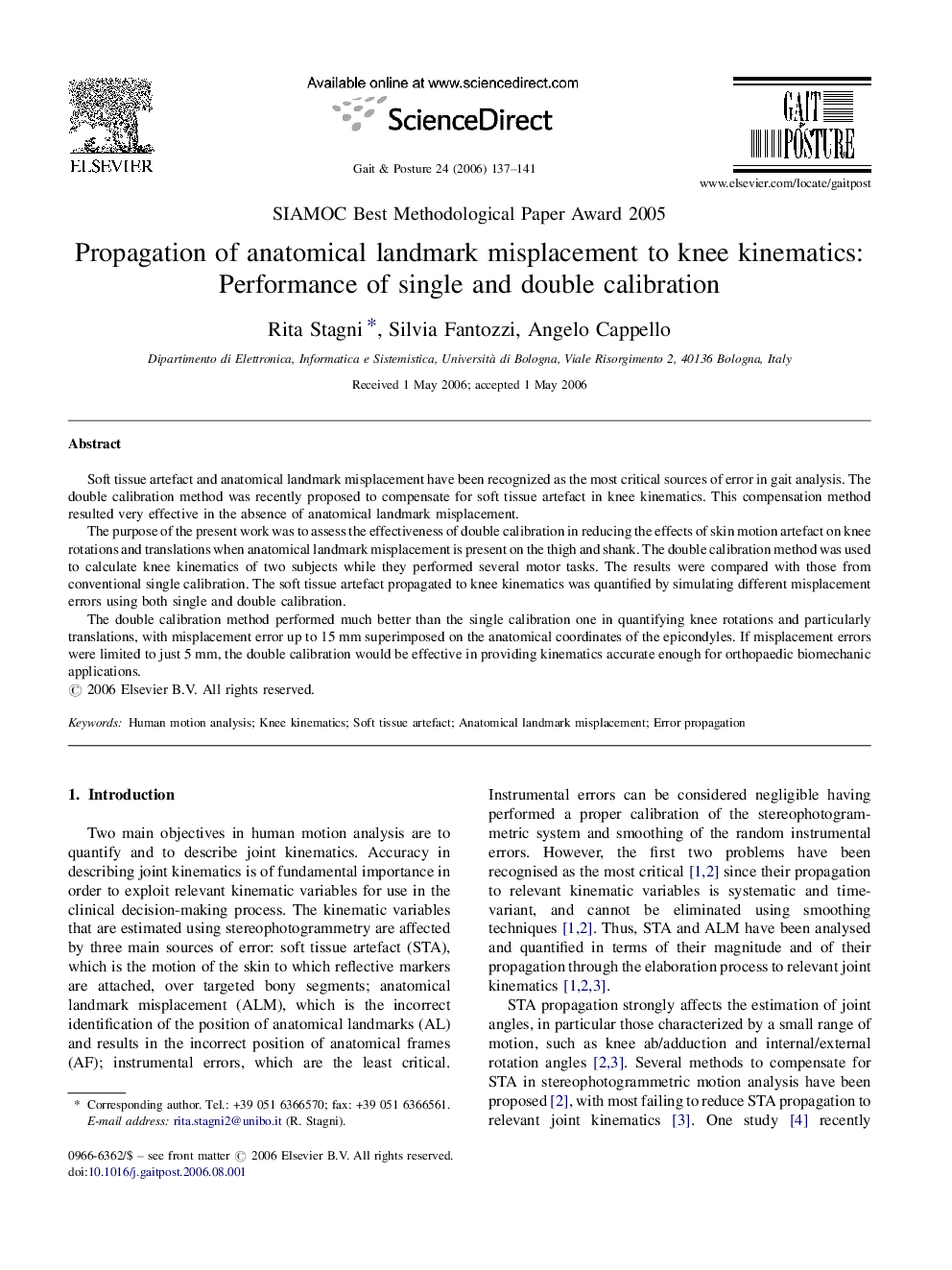| Article ID | Journal | Published Year | Pages | File Type |
|---|---|---|---|---|
| 4058670 | Gait & Posture | 2006 | 5 Pages |
Soft tissue artefact and anatomical landmark misplacement have been recognized as the most critical sources of error in gait analysis. The double calibration method was recently proposed to compensate for soft tissue artefact in knee kinematics. This compensation method resulted very effective in the absence of anatomical landmark misplacement.The purpose of the present work was to assess the effectiveness of double calibration in reducing the effects of skin motion artefact on knee rotations and translations when anatomical landmark misplacement is present on the thigh and shank. The double calibration method was used to calculate knee kinematics of two subjects while they performed several motor tasks. The results were compared with those from conventional single calibration. The soft tissue artefact propagated to knee kinematics was quantified by simulating different misplacement errors using both single and double calibration.The double calibration method performed much better than the single calibration one in quantifying knee rotations and particularly translations, with misplacement error up to 15 mm superimposed on the anatomical coordinates of the epicondyles. If misplacement errors were limited to just 5 mm, the double calibration would be effective in providing kinematics accurate enough for orthopaedic biomechanic applications.
